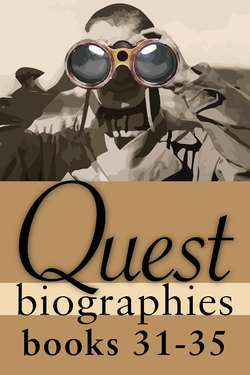Читать книгу Quest Biographies Bundle — Books 31–35 - Rosemary Sadlier - Страница 20
На сайте Литреса книга снята с продажи.
Prologue
ОглавлениеIn 1860, when she was already eighty-five, Laura Secord insisted that she be allowed to put her signature, along with those of other veterans of the War of 1812, on an address to be presented to the visiting Prince of Wales at a special ceremony at Queenston Heights.
The following year the prince, the future King Edward VII, sent Laura a gift of £100 in gold. It was a reward for her service to her country and the Crown, an act of courage in June 1813 when she had walked nineteen miles (thirty kilometres) — alone and through dangerous territory — to warn a handful of officers at a British outpost of an impending attack by five hundred American soldiers.
When the press picked up the story of the prince’s gift, everyone wanted to know more about the woman who’d been the recipient of the royal generosity. Among those who read the newspaper accounts in 1861 was Niagara resident Emma Currie. She would later become one of Laura Secord’s earliest and most respected biographers.
Born Emma Augusta Harvey, Mrs. Currie had spent more than a quarter-century in the little village of St. Davids, near Queenston. There she’d been surrounded by Secords, had listened to numerous stories of the War of 1812, but had never heard any mention of Laura’s name. Now curious, she questioned an elderly resident and learned that what the newspapers were reporting about this woman’s bravery was true.
Meeting Between Laura Secord and Lieutenant James FitzGibbon, June 1813. Artist Lorne K. Smith.
Courtesy Library and Archives Canada, C-011053.
When the Women’s Literary Club was formed in St. Catharines in 1892, Emma Currie, as its founder, wrote a paper to be delivered at the opening, choosing as her subject Laura Secord. During her research, Currie had been surprised to discover that Laura’s ancestors, like her own, had come from Great Barrington, Massachusetts. That paper inevitably grew into a book.
Emma Currie had earlier corresponded with Sarah Anne Curzon, the British-born feminist and the author of poems, a play, and a short biography of Laura Secord. Curzon’s play, Laura Secord, the Heroine of 1812, generated enough interest in Laura that stories and articles about her began to appear in Canadian history books and school texts.
Currie had hoped to be able to access Curzon’s research collection for her book, but Sarah Curzon had died in 1898. Janet Carnochan, a respected local historian and co-founder of the Niagara Historical Society, provided Currie with information about the history of Niagara, and she was most fortunate to be able to interview Laura’s great-niece and granddaughter.
Emma Currie’s book, The Story of Laura Secord and Canadian Reminiscences, was published in 1900. It contains a copy of the only known autograph of Laura Secord, and the portrait in the front is taken from what is believed to be the only authentic portrait of the heroine. Even today, Currie’s book remains a respected source of expert information.
If an old lady had not been so determined to be included on the prince’s address, and if his gift had gone unnoticed by the press, the public might have continued to be unaware of the heroine who’d lived among them, unheralded, for forty-seven years.
